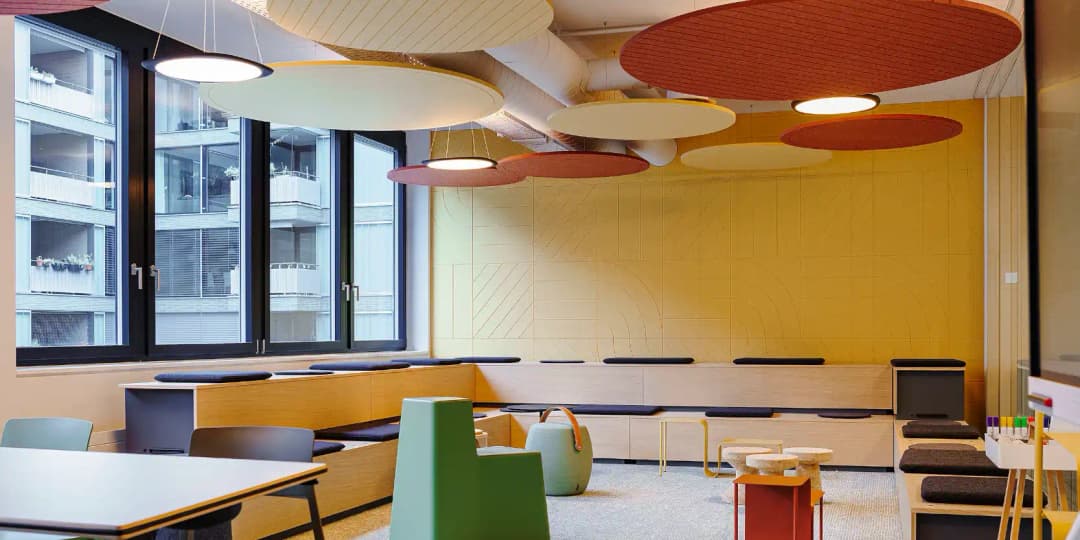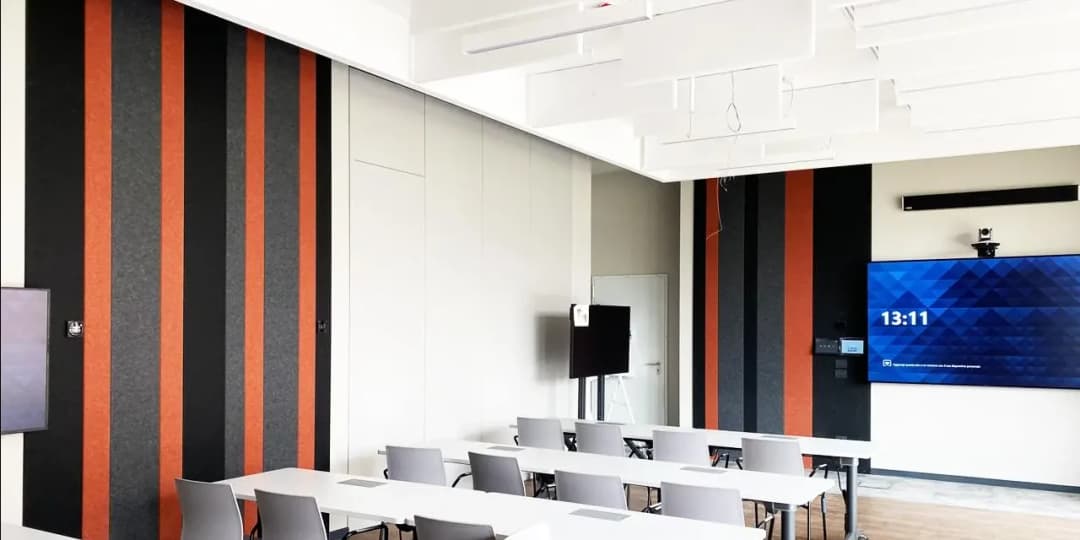Acoustics in education
Boost concentration and support the well-being of students and staff members
Book a Education survey→Enhancing learning environments through acoustic solutions
The importance of acoustics in education
Teachers in primary, secondary, and tertiary education rely on effective communication. However, learning environments with poor acoustics pose significant barriers to students’ education.
Some of the main challenges created in classrooms with bad acoustics are large distraction distances, poor speech intelligibility and high reverberation times. This makes it difficult for students to concentrate for the whole lesson and harder for the teachers to teach the ones that are still concentrating.
Addressing acoustic challenges
Low budgets, old designs and a previous lack of understanding about acoustics means some rooms are much worse than others. To make it clear, the UK Government has set minimum performance standards for the acoustics of school buildings, Building Bulletin 93 (BB93).



Benefits of good classroom acoustics
Meeting the criteria set out in BB93 has proven to foster better communication, create an environment more conducive to learning and lead to better results for students and teachers.
Benefits for everyone
- Head teachers and administrators: Improved academic performance, better student behaviour, and enhanced reputation.
- Teachers: Reduced vocal strain, improved classroom communication, and enhanced teaching effectiveness.
- Students: Happier students that can concentrate for an increased length of time and benefit from less distractions.
Inclusivity matters
Neurodivergent students and those with hearing impairments can be particularly sensitive to noise. We believe a child’s ability to access education should be in line with their needs and not just the needs of the majority.
Our approach
Each classroom or lecture theatre has its own unique acoustic footprint, that’s why our engineers come to site to see you. Take advantage of our free acoustic survey and quote today.

